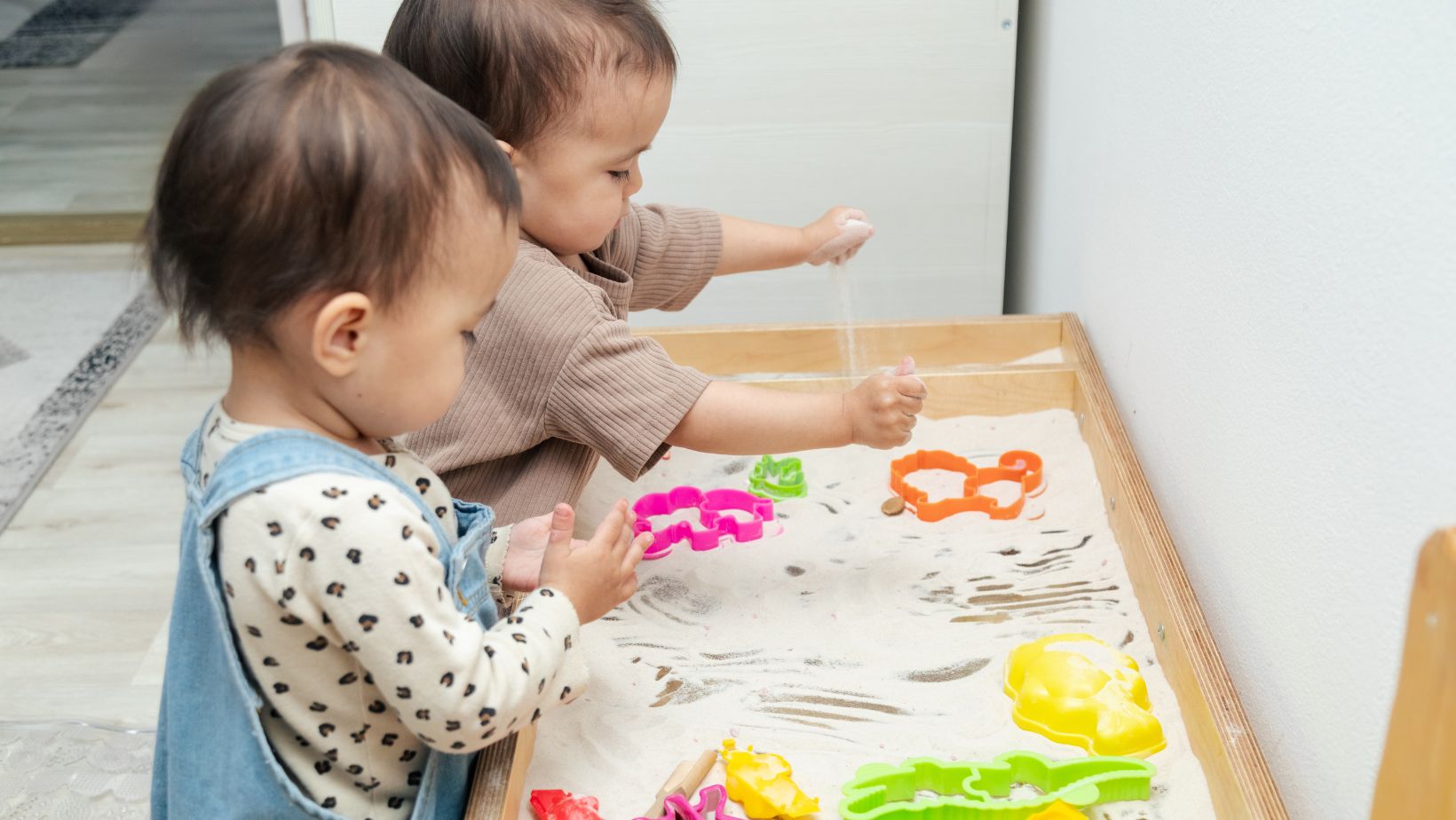Are you searching for a fun and engaging activity to stimulate your toddler’s senses? Look no further than a sensory table for toddlers! This versatile play station provides endless opportunities for exploration, learning, and sensory development.
A sensory table is specifically designed to encourage tactile experiences through the use of various materials such as sand, water, rice, or even colored pasta. These different textures help children develop their fine motor skills as they scoop, pour, and manipulate the materials with their hands or tools.
Not only does a sensory table offer numerous benefits for your little one’s development, but it also promotes imaginative play and creativity. By introducing different themes or objects into the table like plastic animals or kitchen utensils, you can spark their imagination and encourage pretend play scenarios. So why wait? Set up a sensory table for your toddler today and watch as they eagerly dive into a world of exploration and discovery.
Sensory Table For Toddlers
When it comes to selecting a sensory table for toddlers, there are several factors to consider. As an expert in early childhood development, I understand the importance of providing stimulating and engaging experiences for young children. Here are some key points to keep in mind when choosing a sensory table for your toddler:
- Size and Height: Opt for a sensory table that is appropriately sized for toddlers. It should be low enough for them to reach comfortably without straining or needing assistance. Look for tables with adjustable legs or consider using sturdy crates or bins as alternatives.
- Material and Durability: Toddlers can be quite energetic and curious, so it’s essential to choose a sensory table made from durable materials that can withstand their active exploration.
- Design and Features: Consider the design elements that will enhance your toddler’s experience with the sensory table. Look for tables with multiple compartments or trays that allow them to explore different textures, colors, and materials simultaneously.
- Safety Considerations: Safety should always be a top priority when selecting any play equipment for toddlers. Ensure that the sensory table has rounded edges and corners to prevent any potential accidents or injuries.
- Versatility: Choose a sensory table that offers versatility in terms of activities it can accommodate. Look for options with removable lids or covers that can transform the table into other play surfaces like water tables or sandboxes.
- Storage Space: Considering limited space in many households, finding a sensory table with built-in storage compartments is ideal. This allows you to keep all the necessary tools, accessories, and supplies organized while minimizing clutter.
When selecting a sensory table for toddlers, prioritize appropriate size and height, durable materials, engaging design features, safety considerations, versatility in activities, and storage space.

Benefits Of A Sensory Table For Toddler Development
A sensory table for toddlers can be an invaluable tool in promoting their overall development. Here are some of the key benefits:
- Sensory Stimulation: A sensory table provides a variety of textures, colors, and materials that engage a toddler’s senses. This stimulation promotes their cognitive development as they explore different sensations through touch, sight, and even smell.
- Fine Motor Skills: When toddlers play with items in the sensory table, such as pouring water or scooping sand, they practice and refine their fine motor skills.
- Language Development: As children interact with the sensory materials in the table, they often engage in imaginative play and storytelling. This fosters language development as they describe what they are doing or create narratives around their play experiences.
- Cognitive Growth: The open-ended nature of a sensory table encourages problem-solving and critical thinking skills in toddlers. They learn to make connections between cause and effect as they experiment with different objects and materials.
- Social Interaction: Sensory tables can facilitate social interaction among toddlers when used in group settings like daycare centers or preschools. Sharing materials, taking turns, and collaborating on projects promote important social skills such as cooperation and communication.
In summary, incorporating a sensory table into your toddler’s playtime routine offers numerous benefits across various aspects of their development: from sensory stimulation to fine motor skills, language development, cognitive growth, social interaction, emotional regulation, and nurturing their creativity and imagination.
My name is Andrea Thompson and I’m a home based freelance writer. I’m 23 years old, married to my best friend, and mother to a wonderfully independent and opinionated 3 year old girl and step-mother to a sweet seven year old boy. I live in a tiny, little town in Kentucky, where I spend my free time fishing with my kids.
Writing has always been my passion, which I followed through high school, and for a while in college. Life happened, and once I discovered we were pregnant, I switched directions; opting for the healthcare industry because of the stability.
Finally, years later, I was in a place where I could leave the day job that never truly made me happy, and pursue my dreams. I’ve built, and am still building, my writing career from scratch. But, I’m passionate and I’m good at what I do. And, in the end, I can prove to my daughter that she can do anything she wants with this life.





